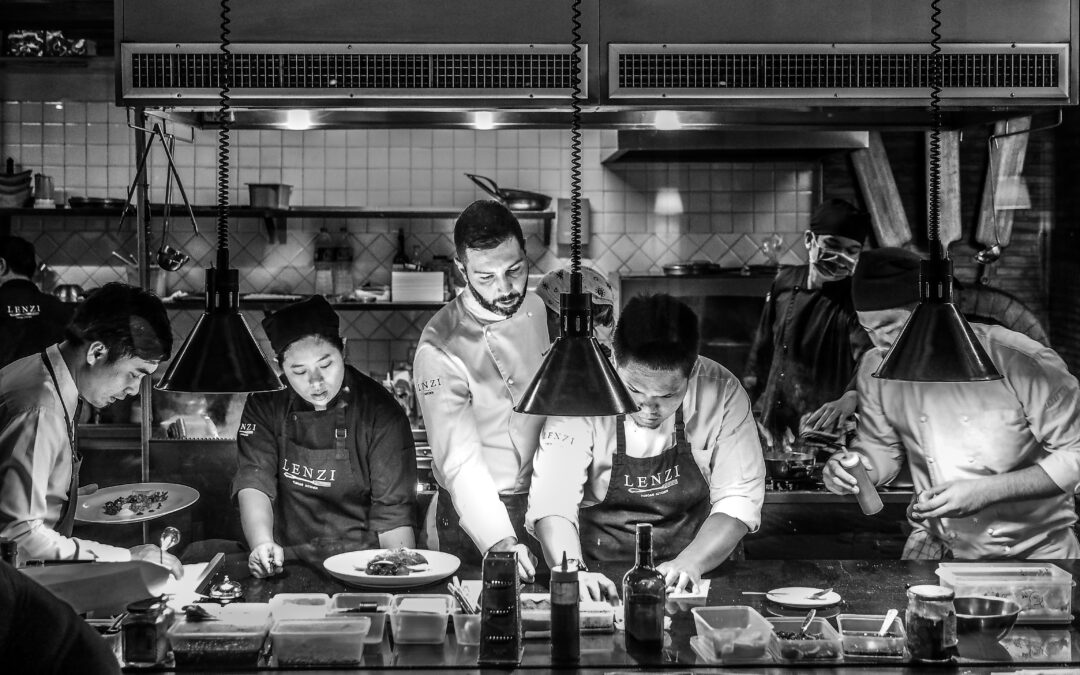The back of the house is always high traffic and high-risk area. Hot items, sharp tools, and frayed tempers make life very stressful for the average kitchen staff.
But there are ways to streamline your kitchen operations and make life more efficient (and tolerable) for your cooks.
Streamline your menu
When you plan your menu, you need to think about more than just what you want to serve or what your customers would like. You also need to consider how your menu choices affect your kitchen.
For example, don’t overload a menu with grilled dishes, because your one medium-sized griller will never be able to keep up. Similarly, a menu filled primarily with time-consuming, high-labor plates will result in slow kitchen service and long customer wait times.
Also, consider how your dishes use up stock. Your cooks should be able to use each ingredient in multiple recipes. Chinese restaurants are masters at this kind of efficiency. Their menus are full of items that are just variations on the ingredients they already have. A component that is only used in a single dish is a waste of money and storage space.
Pay attention to your kitchen layout
A kitchen is a lot like a factory floor. Orders need to move from one station to the next in a smooth, logical flow. Any obstructions or haphazard placements will, at best, slow things down and, at worst, cause accidents.
Pay attention to where cooking and prep stations are laid out concerning the stockroom, and where utensils and tools go when not in use. Also, check whether cooks are returning inventory or tools to their original positions when not in use. That makes things easier for other cooks in the kitchen.
Obsessively track inventory
Restaurant inventory is a balancing act with natural consequences. Order too much, and you tie up cash flow in slow-moving items. Order too little, and you risk running out of ingredients at a critical time.
Always keep close track of your inventory so you can maintain a low-stock list that is just enough to make it to your next scheduled delivery. Use appropriate inventory management software and best practices to ease the burden on your team.
Manage to seat properly
Yes, the front of the house is responsible for seating patrons. But if the wait staff seat 30 guests without spacing them out, then that means the kitchen will have to deal with 30 orders coming in all at the same time! Orders will get backed up, and diners will be forced to wait longer.
The wait staff can manage the flow of guests by balancing large parties with smaller groups. They can also put patrons on a wait list and advise them it will take some time to get seated (15-30 minutes). This window gives the kitchen more time to answer current orders and make room for the next wave of diners.
Some of the above suggestions may involve rethinking significant parts of your restaurant (especially the first two), but the benefits will be immediately visible. Your kitchen staff and your customers will thank you for it!
